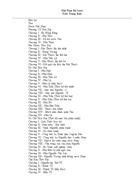
The Chỉ nam was produced at a crossroads in the history of Vietnamese vernacular writing. The bilingual prefaces seek to dissolve the linguistic and cultural barriers separating the vernacular from the classical mode and to render Vietnamese intelligible in terms of Literary Sinitic intellectuality.

Though usually read separately, they in fact combine to form an interlocking argument that redefines Nôm, not as a crude or simplistic facsimile of Sinitic writing, but as a legitimate and authentic extension of the sagely and civilizing technology that Han characters represented. The Chỉ nam bears two prefaces: one in Literary Sinitic (written in Sinitic characters) and one in Vietnamese (written in Chữ Nôm). Remarkably, just such a reinvention is articulated in the prefatory material of a seventeenth-century Sino-Vietnamese dictionary called the Chỉ nam ngọc âm giải nghĩa (Explication of the Guide to Jeweled Sounds 指南語音解義). Vernacular writing had to be reinvented, however, before it could be used for the kind of intellectual and imaginative tasks exemplified by later literature. The relatively dramatic escalation in Nôm composition over the eighteenth and nineteenth centuries suggests an equally dramatic shift in the cultural and intellectual attitudes of the literati who practiced it.


Nevertheless-while Vietnamese did not truly eclipse Literary Sinitic until the twentieth century-vernacular language did experience a rapid ascent after the seventeenth century, when Vietnamese-language works rendered in the morphographic character system known as Chữ Nôm burst into popularity. As with other nascent vernacular forms in East Asia, the practice of composing in Vietnamese was long held to be inferior to or unnecessary in the face of Literary Sinitic at best it was viewed as a pedagogical crutch for learning the classical language. The history of vernacular writing in Vietnam describes an intimate and evolving relationship with Literary Sinitic.


 0 kommentar(er)
0 kommentar(er)
